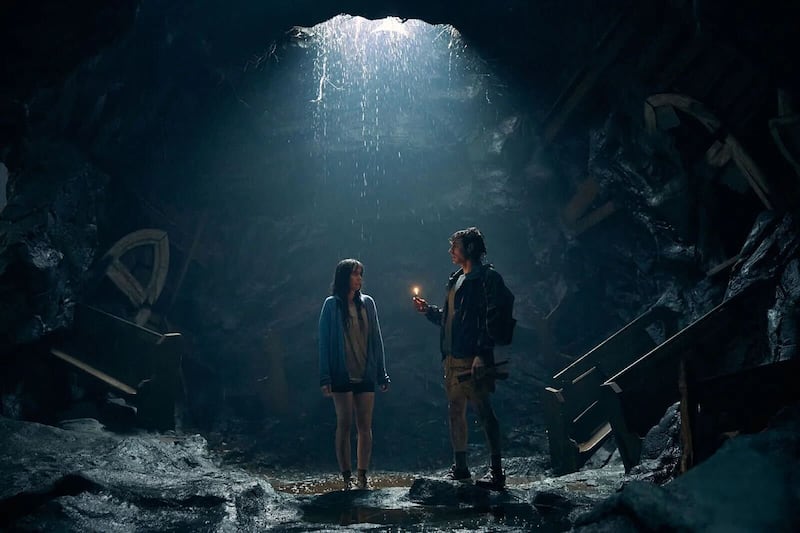Here’s a fun science fact for the day: down in the ocean’s darkest, coldest depths, an area we’ll call Davy Jones’ sub-locker, exist species of deep-sea anglerfish whose males have evolved their way into a permanent form of conscious coupling.
On finding a suitable partner, these fellas spew out an enzyme that melts the skin, his and hers, and fuses their bodies into a single organism; they share all of their meals, circulate the same blood, and enjoy one another’s good parts in tandem.

Gross! Romantic, too, if you view romance and codependence through the same lens.
For Tim (Dave Franco), one half of the leading duo in Together, an uncommon contemporary example of male-facing body horror from director Michael Shanks, it’s just gross.
His overreliance on, and ambivalence toward, his longtime girlfriend, Millie (Alison Brie), isn’t sourced from physical aversions, exactly; later on in the film, he confides to Millie his memory of walking in on his parents in bed, and finding that his father had died some number of days prior while his mother kept going to sleep next to his mouldering corpse.
The psychic impression that discovery made on him explains his paralyzing fear of cohabitation and commitment, the keys to the film’s plot and motifs, but its spiritual effect naturally comes to encompass new corporeal realities for Tim and for Millie.
As the story opens, Millie has just gotten a job teaching elementary school English in the countryside, and Tim, reluctant but loyal, goes along with her, leaving his musician dreams behind. He adjusts poorly to his new environment; you can take the man out of the city, but boy you sure can’t take the city out of the man.

Tim doesn’t know how to effectively use a compass, build a fire, or blaze a trail in the woods, no matter how much Man vs. Wild he’s mainlined. (He knows how to sniff out a rat king, to his credit, and has the mettle to dispose of one, too.) His sciolism is charming, until the pair find themselves stuck in a pit cave during a rainstorm. At that point, the charm is replaced with a newfound magnetic pull toward Millie that Tim starts to experience once the weather abates and they safely climb back to daylight.
Even acknowledging the couple’s declining intimacy, this inexorable attraction is a bit much for her, but this is what happens when you drink water from strange subterranean pools, as did poor Tim, thirsty and absent a better option on their unintended overnight in the dirt.
He crosses a line by tracking her down at her job, and though she’s outraged at first, her husband’s sudden sexual pull is too much for her to resist; they have sex in a stall in the boys’ bathroom as students loudly enjoy recess outside the facility’s walls. Happily flustered at first, Tim and Millie find the same sexual pull nearly impossible to detach from: their genitals, like those frumpy old anglerfishes, have bonded, like they accidentally reached for the Elmer’s instead of the Good Clean Love.
Shanks doesn’t explicate the “what” of the cave. He leaves the mystery intact as a fun treat for his viewers, knowing full well that the “what” is less interesting than its consequences: that Tim literally can’t stay away from Millie when he’s in the “what’s” thrall, and that if they make contact with one another, their bodies will begin to fuse, well: together. (Hey, that’s the name of the movie.)

The basic conceit is played chiefly for the combined genre pleasure of gross-out terror, with ancillary displays of high anxiety and gallows humor. The bathroom sex scene squeamishly evinces the former; a second act beat where Tim and Millie snort muscle relaxants to foil their unwanted conjoinment emphasizes the latter. The scene’s frenzied sincerity evokes the deranged energy of The Wolf of Wall Street’s Lemmon Quaaludes sequence, plus the self-awareness baked into the DNA of Community, the meta-textual NBC sitcom that gave Brie her breakthrough.
That Shanks’ comic tastes mesh so cleanly with his visceral appetites suggests an innate appreciation for how funny and uncanny men’s bodies can be, and especially that both sensations share an inextricable relationship; one cannot fully admire Robin Williams’ impression of a penis if one does not react with a full body cringe to slides of a passing kidney stone.
When Tim vocalizes the roots of his neuroses, that nightmare image of his mom’s manic smile and tear-streaked cheeks, and his dad’s festering body, a phallus-centric view of his masculine identity isn’t one of them. But Together ultimately reflects Tim’s concerns, about the subsumption of his individual identity by his relationship to Millie, through physical transformation. He isn’t afraid of losing his balls. If his truest fear comes to pass–if he ceases to be “Tim” and becomes “Millie’s boyfriend,” much less her fiancé, instead–he’ll lose them all the same. Just like that anglerfish.







